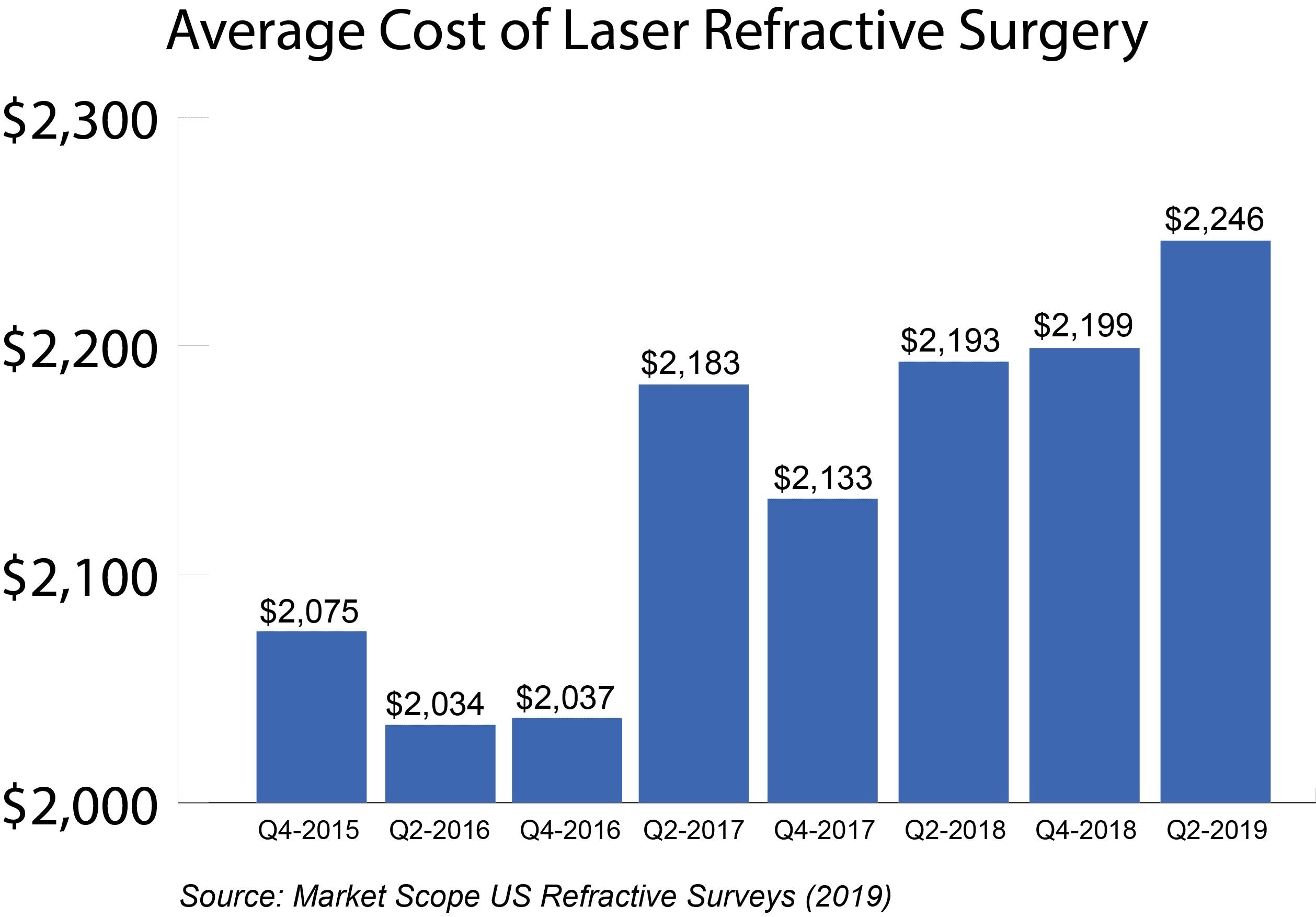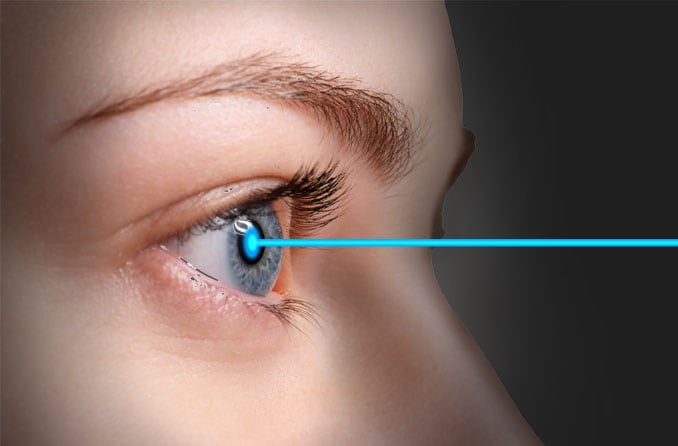How much does LASIK surgery cost in 2024?
In 2024, the average cost of LASIK eye surgery in the United States is about $2,246 per eye, according to a Market Scope report of last year’s data prepared for All About Vision.
Costs are gathered from ophthalmologists who routinely perform LASIK surgery and other vision correction procedures, such as PRK, SMILE and refractive lens exchange.
The actual price you pay for LASIK will depend on many factors, including the experience and reputation of your surgeon and the type of technology used during your procedure.
LASIK costs can vary based on technology
Most refractive surgeons in the U.S. (more than 71% in 2019) charge one price for all vision correction procedures performed with an excimer laser to reshape the cornea of the eye.
In other words, additional technology — such as the use of a femtosecond laser to create the flap in the cornea for bladeless LASIK — is included in a single fee and not priced separately as an "extra."

Other LASIK surgeons, however, base their prices on the specific technology used during the procedure. For example, they may charge more for all-laser LASIK or custom LASIK that employs wavefront technology for a more customized procedure.
A small percentage of surgeons base their laser surgery prices on the strength of your eye prescription. With this kind of pricing, patients with stronger prescriptions will pay more than those with weaker prescriptions.
SEE RELATED: How strong is your eye prescription?
Are cheap LASIK prices really a good value?
You may have seen advertisements promising LASIK eye surgery for less than $1,000 per eye, which sounds like a great value.
But bargain-basement prices can come with catches:
- The advertised price is only for the correction of mild nearsightedness. If you have farsightedness, astigmatism or moderate to high amounts of nearsightedness, LASIK costs can end up being much higher than the advertised price.
- The offer price doesn't cover all fees. For instance, you may have a limited number of follow-up visits or, if there's a problem after surgery, additional care could cost extra. Also, the cost of follow-up surgeries probably isn’t included — and you may even be charged extra for your initial consultation.
- Your procedure may be performed with older technology. Newer technologies can offer a more precise LASIK procedure with less risk of complications. For example, at $499 per eye, you probably won't receive custom or bladeless (all-laser) LASIK. Instead, the surgeon will likely use a tiny blade to create the flap on your cornea.
- Your surgeon might have less experience. A surgeon who's only been performing LASIK surgeries for a couple years will generally charge less than one who's been doing it for 10 or 20 years.
If you're considering low-cost LASIK, make sure you get a written quote that itemizes everything in the offer. Read the fine print, and ask to see any and all potential fees upfront, before signing off on the procedure.










